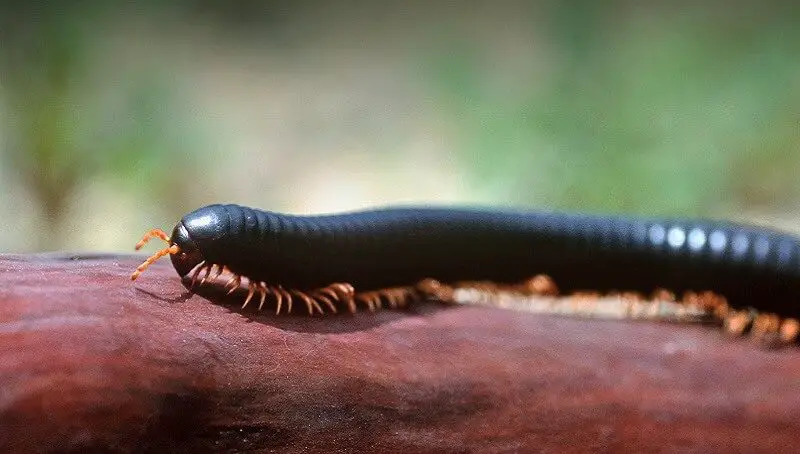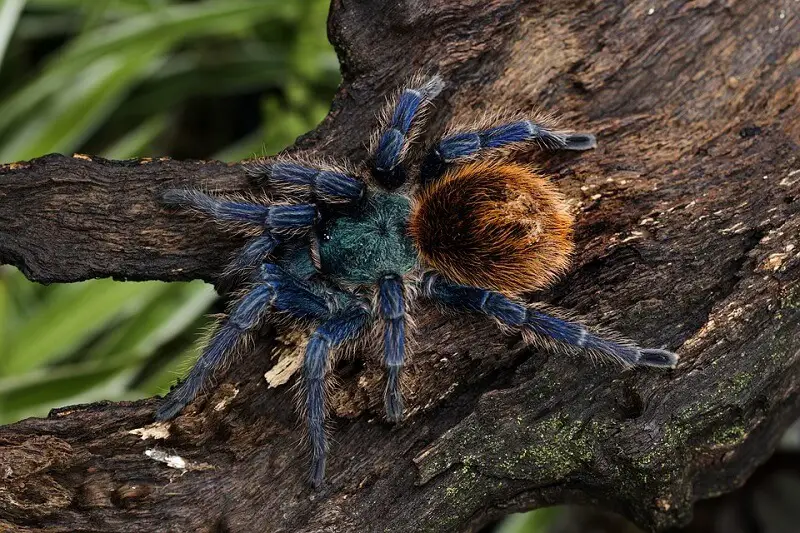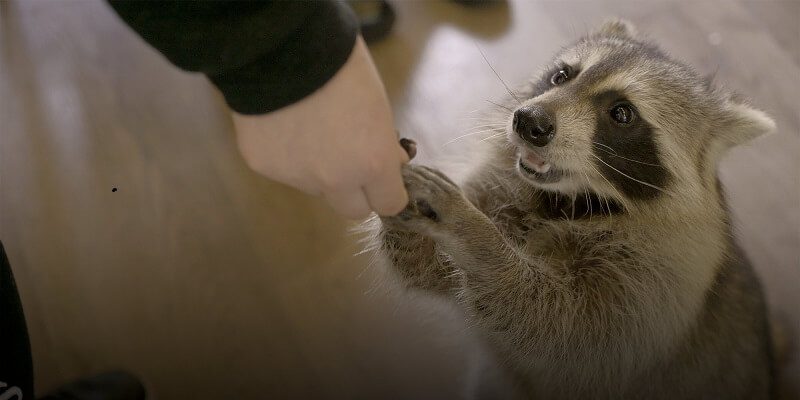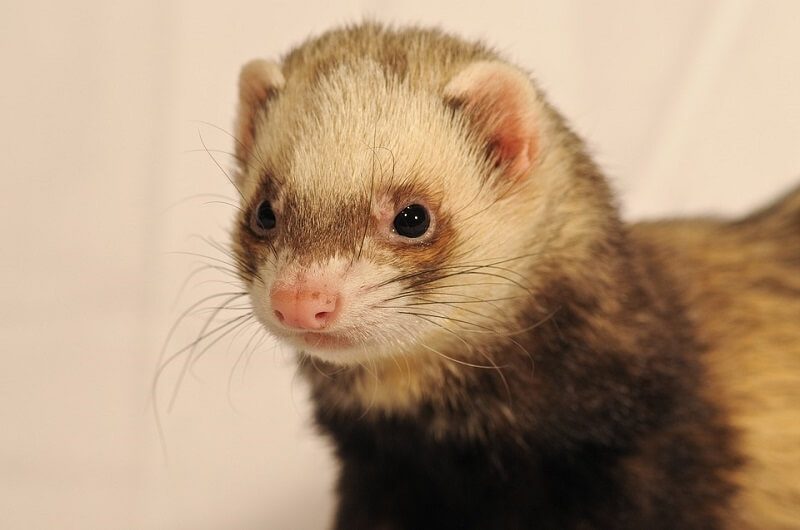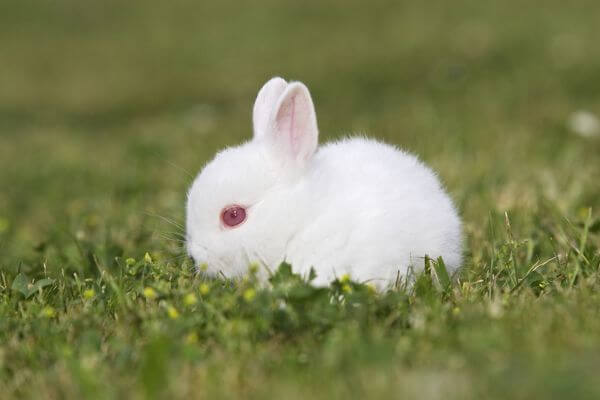If you are looking for a unique exotic pet, easy to maintain and care for, look no further than the giant African millipede. The millipede may seem a bit like insects, but in fact, they are arthropods, related to crabs and shrimp.
There is a variety of centipedes kept as pets, which are generally called giant centipede or giant African centipede, but there is often confusion about the exact species because species identification can be quite difficult in live specimens, and there is a dispute over the correct scientific names of some millipede.
However, while there is some variation in appearance, giant millipedes are largely similar in their characteristics and care requirements. In general, giant millipedes are easy-to-care pets and receive a wonderful reaction from visitors!
Overview
- Common name: Giant African Millipede
- Scientific name(s): Archispirostreptus, Scaphiostreptus
- Adult size: 19 – 25 cm
- Life expectancy: 7 to 10 years
- The difficulty of care: Beginner
Behavior and temperament
Giant African millipedes can be manipulated, are quite docile, and move slowly. They get along well with others so you can keep more than one in the aquarium. They reproduce quite easily, so if you have males and females together, you may also have offspring.
You might also like my articles on cricket anatomy, mealworm lifecycle, and caterpillar names.
Male millipedes have gonopods. These are modified legs on the seventh body segment. These legs look different from the other legs, they have claws like clamps, and are often kept hidden under the body.
While they are generally mild, these arthropods can scare off. When this happens, they have two main defenses: they entwine in a tight spiral and secrete an irritating liquid from the pores of their body.
Warning!
The liquid secretion of a millipede can be harmful if it enters your eyes or mouth, so you should wash your hands after holding it in your hand. Some people are more sensitive to this fluid than others, and some species are more “toxic” than others.
Millipedes do not actually have a thousand legs. They usually have between 100 and 400, with two sets of legs per body segment. Each time they molt, they add more segments and therefore more legs.
Hosting conditions for a giant African millipede
 These animals live very well in captivity and can live in groups without problems. It is important, however, to provide them with a space that suits their needs.
These animals live very well in captivity and can live in groups without problems. It is important, however, to provide them with a space that suits their needs.
As a general rule, a terrarium of 37 to 56 l provides enough space for a few pairs of centipedes. Make sure the length of the aquarium is at least twice its length, and the width is as long as the long millipede. The lower space is more important than the height, and a lid is always a good idea.
Millipedes like to bury themselves a little, so a good layer, about 7 – 10 cm, of peat moss or a mixture of peat/soil moss, without chemical addition or fertilizer, can form the base. It can be covered with sphagnum moss and pieces of bark to provide additional coverage.
Decomposing leaves can also be used, although you may want to freeze them first to kill the insects on them. The substrate should be kept moistened, but not wet.
There are various opinions on the right temperatures for giant millipedes. As these creatures love tropical climates, many owners recommend keeping the terrarium at about 24 to 27ºC or even up to 30ºC.
A thermostat heater, used for reptiles, placed under half of the terrarium can help with heating it. If it heats the substrate too much or dries it, the heat plate can be fixed to the side or part of the back of the terrarium.
On the other hand, many owners do not provide additional heat. If necessary, make sure your room temperature during the day is at least 22ºC, although a slight drop in the night should be okay. The humidity level should also be maintained quite high, and this can be achieved by keeping the substrate moistened, not wet, with a regular spray.
Food and water
Giant African millipedes are herbivorous, feeding in the wild with decomposing materials. In captivity, they can be fed with a variety of vegetables and fruits, cut into small pieces. Softer vegetables and fruits are the best. Try offering them leaf salad, cucumbers, the favorite food of millipedes, tomatoes, melons, peaches, and bananas.
Food can be provided in a shallow bowl or jar lid. Provide food once a day, about as much as your pet can consume during that period of time.
They prefer food that starts to break down, so leaving it for a day or so is not a problem. It is also a good idea to provide some decomposing leaves.
Calcium should be added to the diet. Also, sprinkle a few vitamin supplements containing calcium in their diet.
Be sure to keep a shallow vessel of chlorine-free water available for them. Put a stone in the pot to avoid drowning.
Common health problems
No veterinarian will treat a giant African millipede, so owners must take responsibility for their health. This can be achieved by carefully controlling food, water, and accommodation. Be sure to test the water and double-check the quality of the food and substrate for your millipedes:
- Loss of appetite;
- It is lethargic;
- It seems to have fungus on the shell;
- The shell is not bright.
Purchase of a giant African millipede
Although it is perfectly legal to own a giant African millipede as a pet, it is not legal to import them. When imported from the wild, they wear a symbiotic mite that can cause damage to the crop.
Thus, if you buy such a pet, it must be from an American breeder or a pet store. This means that it can be difficult to find, although there are some breeders selling them. Make sure that whoever sells you the pet is a legitimate breeder with positive reviews from previous buyers.
